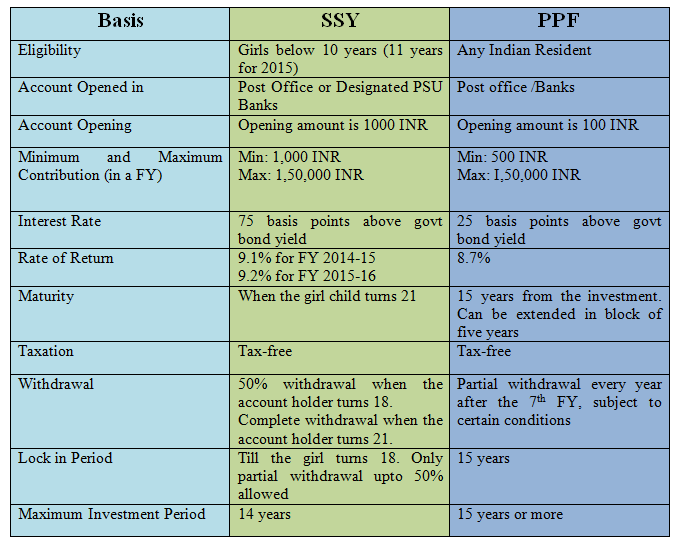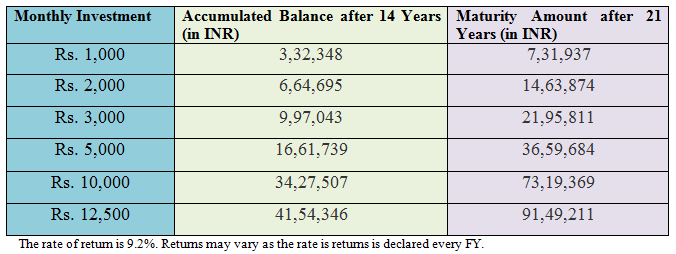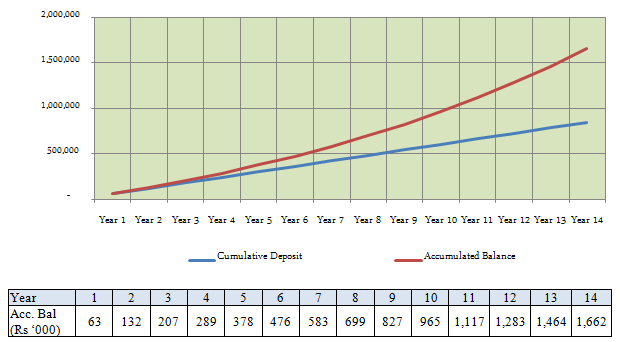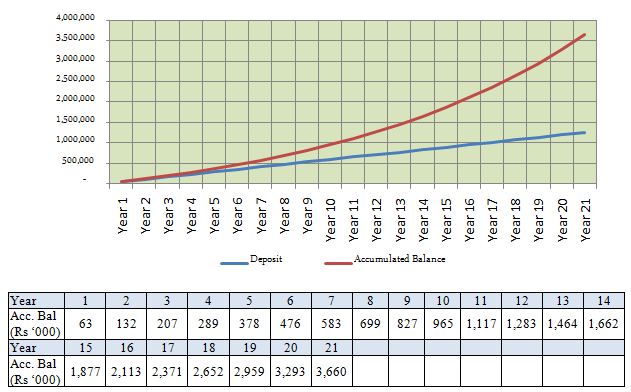Sukanya Samriddhi Yojana vs Public Provident Fund

A portfolio containing the financial plan of a family, typically has financial goals such as higher education, marriage and savings for the child(ren) of the family. One of the most popular avenues of investment is the Public Provident Fund (PPF) which provides dual boon of being a saving and tax savings instrument. It is a Debt scheme that was launched by the Government of India in 1968 to encourage savings among the masses. An account in the PPF can be opened with just 100 INR and the minimum investment in a financial year is 500 INR. The maximum investment in a financial year is 1,50,000 INR. The winning stroke of the scheme lies in the returns being tax free. The Government declares the rate of return annually. The rate of return for the FY2015-16 is 8.7%.
Sukanya Samriddhi Yojana (SSY) under the Government’s ‘Beti Bachao Beti Padhao’ initiative is the talk of the town. The scheme is applicable only to those investors who wish to make an investment for the future of their girl child. The girl child has to be less than or equal to 10 years. In case For 2015 the Government has declared a grace period of one year, therefore, currently this account can be opened even upto age 11. There can only be one account per child and the scheme is applicable to maximum two girl children. In case of a twin or a triple the facility shall be extended to the third female child as well. SSY as the name suggests is exclusively for investment in a girl child’s future.
The biggest advantage of the scheme is that it allows the account holder to operate the account after the age of 10, in case she wishes to. 50% of the corpus can be withdrawn at the age of 18 and the funds will only be transferred to the newly turned adult’s bank account. The account holder when turns 21 or when she is getting married whichever is earlier can withdraw the entire corpus. In case she wishes not to withdraw the corpus, it will continue to accumulate interest.
A minimum deposit of 1000 INR must be made annually otherwise a fine of 50 INR will be levied. The maximum investment in a FY is 1,50,000 INR. The investment must be continued only till the age of 14 after which the corpus will gather interest. It is often compared with PPF and analysts are weighing the pros and cons of both the schemes. SSY is a Debt scheme which declared a return of 9.1% for the FY 2015-16 has a higher return of 0.40% than PPF. This is often sighted to highlight the differences between the two schemes. In terms of liquidity PPF is slightly better than SSY. The loans can be availed from PPF account between third and sixth year, and should not exceed 25% of the balance of the second immediate preceding year. Rate of interest of the loan will be 2% more than prevailing PPF rate and the loan must be repaid in two years. Under certain conditions you can also withdraw from your PPF account before the maturity. Withdrawals are permitted after 7 years subject to certain conditions and such withdrawals must not exceed 50% of the balance at the end of the fourth year, or 50% of the balance at the end of the immediate preceding year, whichever is lower. Many experts are also of the opinion that for such a long term investment in Equity funds might yield better returns. Tax deductions u/s 80c is allowed for upto a limit of INR 1.5 lacs, subject to the overall Section 80c limit.
If you are investing for your daughter’s future then this scheme ensures that the finances are ready when she is ready to step into the world. It gives your girl child direct access to her finances ensuring that the fund set aside for her benefits are not laundered around with.
SSY in a glance:
- For girls below 10 years old ( 11 years for FY 2015-16)
- Can be opened by guardian or any of the parents/person acting as guardian in absence of guardian
- Minimum deposit of 1,000 INR in a FY
- Maximum deposit is 1,50,000 INR in a FY
- Maturity period is when the account holder turns 21
- 50% withdrawal is allowed when the account holder turns 18
- Rate of return declared by the RBI every year
- The rate of return for FY 2015-16 is 9.2%
Difference between SSY and PPF

Returns on SSY

Accumulated Yearly Balance
The chart below shows the accumulated yearly balance for Rs 5,000 monthly deposit in a Sukanya Samriddhi account over a period of 14 years. Please note that the maturity amount is totally tax exempt.

Now let us take a look at the accumulated yearly balance for Rs 5,000 monthly deposit in a Sukanya Samriddhi account over a period of 21 years.

Queries
-
What is the benefit of mutual fund STP
Aug 29, 2019
-
How much to invest to meet target amount of Rs 2 Crores
Aug 26, 2019
-
Can I achieve my financial goals with my current mutual fund investments
Aug 24, 2019
-
Can you tell me return of various indices
Aug 19, 2019
-
What would be the post tax return on different investments
Aug 18, 2019
-
Which Principal Mutual Fund scheme will be suitable for my retirement corpus
Aug 16, 2019
-
What is the minimum holding period for availing NCD interest
Aug 4, 2019
Top Performing Mutual Funds
Recommended Reading
Fund News
-
Bandhan Mutual Fund launches Bandhan Silver ETF FOF
Jan 12, 2026 by Advisorkhoj Team
-
Bandhan Mutual Fund launches Bandhan Gold ETF FOF
Jan 12, 2026 by Advisorkhoj Team
-
The Wealth Company Mutual Fund launches The Wealth Company Gold ETF FOF
Jan 9, 2026 by Advisorkhoj Team
-
Mahindra Manulife Mutual Fund launches Mahindra Manulife Innovation Opportunities Fund
Jan 9, 2026 by Advisorkhoj Team
-
Jio BlackRock Mutual Fund launches Jio BlackRock Short Duration Fund
Jan 8, 2026 by Advisorkhoj Team














